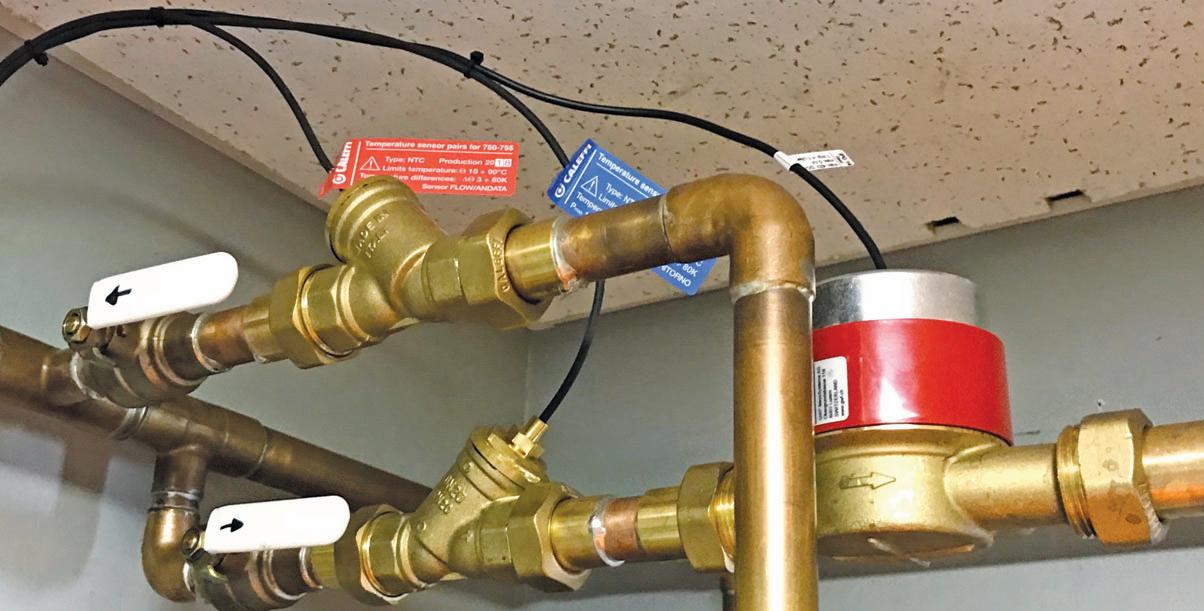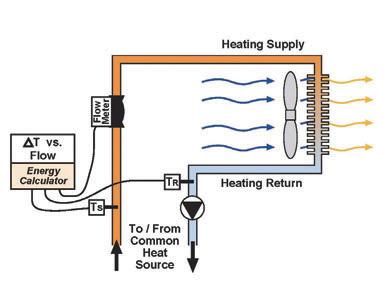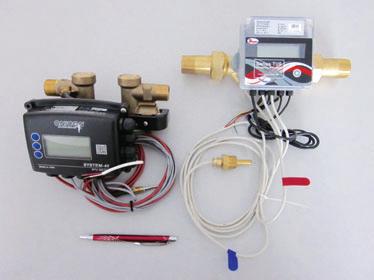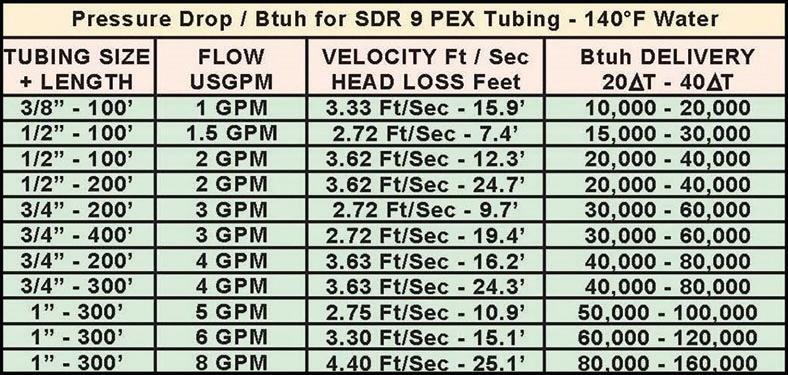
6 minute read
Hot Water Heating
for small homes
A Btu meter/calculator allows accurate and detailed billing.
Additional applicationsin the residential market may offer n ew opportunities By Roy Collver
T wo important trends are underway in the residential building industry that will permanently alter heating system design in Canada: 1) Living spaces for the majority of us are trending physically smaller. 2) Codes and standards increasingly mandate reductions in energy use – heating and cooling loads are getting smaller. We have already reached one tipping point as the loads in specialbuild passive and net zero houses are less than the lowest output available from most conventional central heating and cooling appliances.
The next tipping point will soon be here as energy codes across the country require all houses to be “net zero ready,” reported Andrew Oding, vice president of Building Knowledge Canada, Cambridge, Ont.
I have been seeing this trend developing for decades now. My question is how ready, willing, and able is the housing industry to start moving to net zero? Oding and his colleagues are what you call “building scientists.” Their answer: the building industry is mostly ready now. How ready is the plumbing and HVAC industry to service the needs of net zero? I think we have some heavy lifting to do if we want to be included.
Energy efficient construction methods are bringing heating loads down to less than 10 Btu/h per sq. ft. Skeptics are going to say that hydronics will fade away except in humungous custom mansions, but I see some great opportunities in more modest residential construction if our industry can get busy innovating.
Domestic hot water (DHW) loads are really not changing much, so it is clear that DHW will often require a much higher energy input than heating. The folks at NRCan anticipated this many years ago with their drive to develop standards for combi systems, and these systems can certainly go a long way towards filling the gap.
Unfortunately, even combi appliances can be grossly oversized for the heating loads we are starting to see, and gas-fired units will need a gas meter and an individual gas line. With such small loads, occupants will likely pay more for meter and administration charges than the energy used.
I said in a previous article: It makes little sense with today’s reduced heating loads to provide individual combustion appliances for heating smaller living spaces in multi-family buildings or row housing. One solution will be to provide central boilers and/or heat pumps to serve multiple units with distributed
heating, chilled and domestic hot water, and take advantage of the ability of hydronics to move energy through small non-invasive piping systems.
Energy metering
Cooling loads are not changing much, and chilled water is also hydronics, so there is still a role for us to play. What is this going to look like, and is affordable and reliable equipment available? Thermal energy submetering has been tried across the country with varied success. It looks like Btu metering might be ready for prime time with Canada initially referencing the established European standard EN1434, allowing affordable European products to be used.
One simple example of how these meters

work is illustrated here detailing an air handler for heating only. If the flow rate of the heating fluid as well as the temperature drop across the air handler is measured, the thermal energy used at any given time can be calculated. (See Fig. 1)
Energy metering of both hot and chilled water is very accurate and getting easier and
less expensive. Type “Btu meters” into your browser and you can find more information than you can handle. Some companies appear to be getting ready to service an anticipated surge in the demand for Btu metering solutions through the traditional plumbing and HVAC distribution channels.
A basic Btu/h meter comes with an
Please see ‘Micro-tube on page 17
By measuring the flow rate of the heating fluid, the amount of thermal energy can be determined. (Photos courtesy of John Siegenthaler)
Fig. 1: Energy use through an air handler can be calculated by measuring flow rate and temperature drop.

Micro-tube distribution may be next big thing
Fig. 2: A comparison of different tube sizes and lengths and the effect of different Delta Ts. (NOTE: This chart is for comparison only – please do not use it for engineering purposes.)
Btu metering provides a way for building owners to track energy use in individual offices or suites.


Continued from page 15
electronic calculator, a flow meter and supply and return temperature sensors. Most calculators can be connected to a network along with the others in a building and the energy use for each unit is sent to a central computer. Landlords and management companies can then produce detailed billing statements for tenants and condo owners.
With the right piping, a single energy meter can also measure domestic hot water energy used, and some meters can measure and bill for chilled water used as well. Design and installation details are critical for success. One resource I return to is the Caleffi publication Idronics 24 – Fundamentals of Heat Metering in Hydronic Systems.
Mini-tube distribution
For smaller projects, say 15 units or less, a single mechanical room could service a complete building with the small noninvasive piping systems I have mentioned. Heating loads to each unit should be no more that 10,000 to 15,000 Btu/h, and DHW loads might be no more than 30,000 Btu/h (if storage tank indirect heaters are used). Each unit could individually be serviced with the equivalent of half-inch or 3/4-inch PEX tubing.
Take a look at the chart I provided and study it closely. Divide the tubing lengths in half to determine the distance from the mechanical room and consider the effect of temperature drop on heat delivery. Knowing a thing or two about condensing boilers and other low temperature heat sources, I believe “mini-tube” distribution systems (a phrase coined by my friend John Siegenthaler in 1997) might be the next big thing to really help make distributed heating a perfect solution for these micro-district heating systems. (See Fig. 2)
A 20F Delta T is commonly used in hydronic heating at design conditions but designing with a 40F Delta T will double the heat delivered. With careful engineering, some air handlers and indirect storage DHW heaters can operate at a 60F Delta T. Detailed analysis of heat exchanger capacities at differing temperatures is required (not for novices or the faint of heart). Manufacturers will need to design equipment to work at the higher delta T with maximum entering water temperatures (EWT) up to 160F. Efficiency is gained by returning cooler water back to the boiler or heat pump with control software optimizing efficiency by adjusting EWT as required by varying load conditions. Really play with the chart – extrapolate to a 60F Delta T and let your imagination wander around different piping concepts.
For example: 60F Delta T through 200 feet of half-inch PEX can deliver 60,000 Btu/h to a unit – 100 feet of half-inch each way is going to get you from the mechanical room to the closer units in a stacked townhouse building. Going up to 200 feet each way with 3/4-inch, you can pipe the whole building homerun with just a 40F Delta T.
Keep those emails coming – this is a concept that will benefit from many minds working together. ✚
Roy Collver is an author and consultant on hydronic heating based in Qualicum Beach, B.C. He can be reached at










